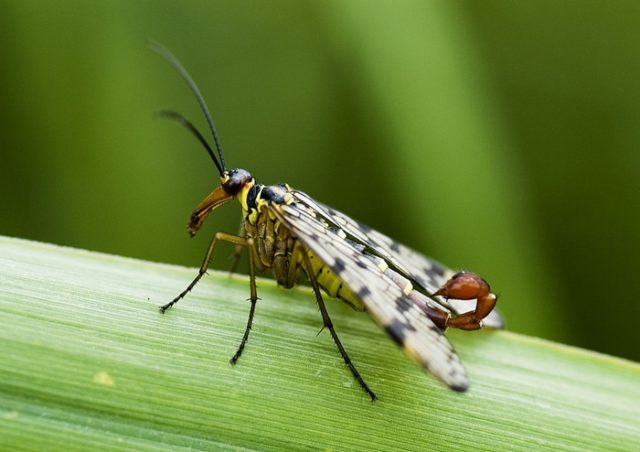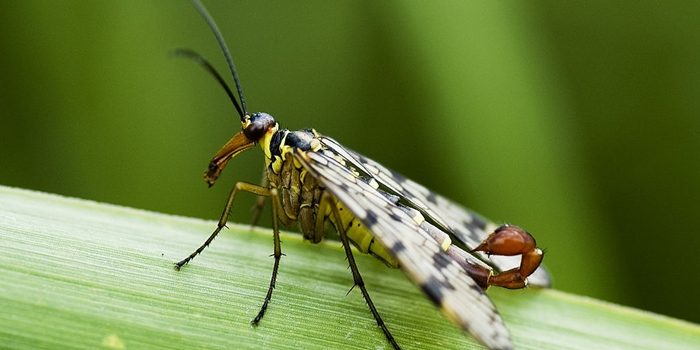This week’s Mystery Creature was certainly a bizzare looking insect; it looked like a hybrid of a fly and a scorpion, which is why it is aptly named as the scorpion fly. Scorpion flies come under the order Mecoptera, of which there are many families. This scorpion fly is a common scorpion fly (the Panorpidae family).
Well done to Sandra M. who rightly identified this week’s Mystery Creature!

P. Communis; Image credit: Mikkel Houmøller (Lostmonkey); Image source: wiki commons
There are nearly 600 species of scorpion fly worldwide.
The scorpion fly (sometimes called a scorpion wasp because of colouring) has some very distinctive features. Firstly, that scorpion-like tail, found only in males, which is not actually a tail at all, but the genitals of the insect! These scorpion-like tails also have notal organs to help hold a mate. The females body just tapers into a straight point, with no dramatically curving appendages!
The scorpion fly also has a very long face, forming a beak-like projection, with mouth parts (mandibula) at the end.
Both the male and female have patterned wings, with a delicate appearance. They are poor fliers and prefer short flights. The spend much of their time crawling among vegetation.
Although this is a foreboding looking insect, it poses no threat to humans. It usually feeds on other dead insects, rotting fruit and nectar.
The eggs of the scorpion fly are laid in the soil and the larvae live underground. They are scavenger feeders too and have a caterpillar appearance during their early stages of development.
Romance comes in an unusual form, the males will typically woo the female with a gift, which may be a piece of a dead insect or a drop of saliva!
They like to live in damp, shaded areas such as lightly wooded spaces, hedgerows or uncultivated patches of land. They are often spotted in nettle patches.
Scorpion flies are considered living fossils as their fossil records date back 250 million years.
